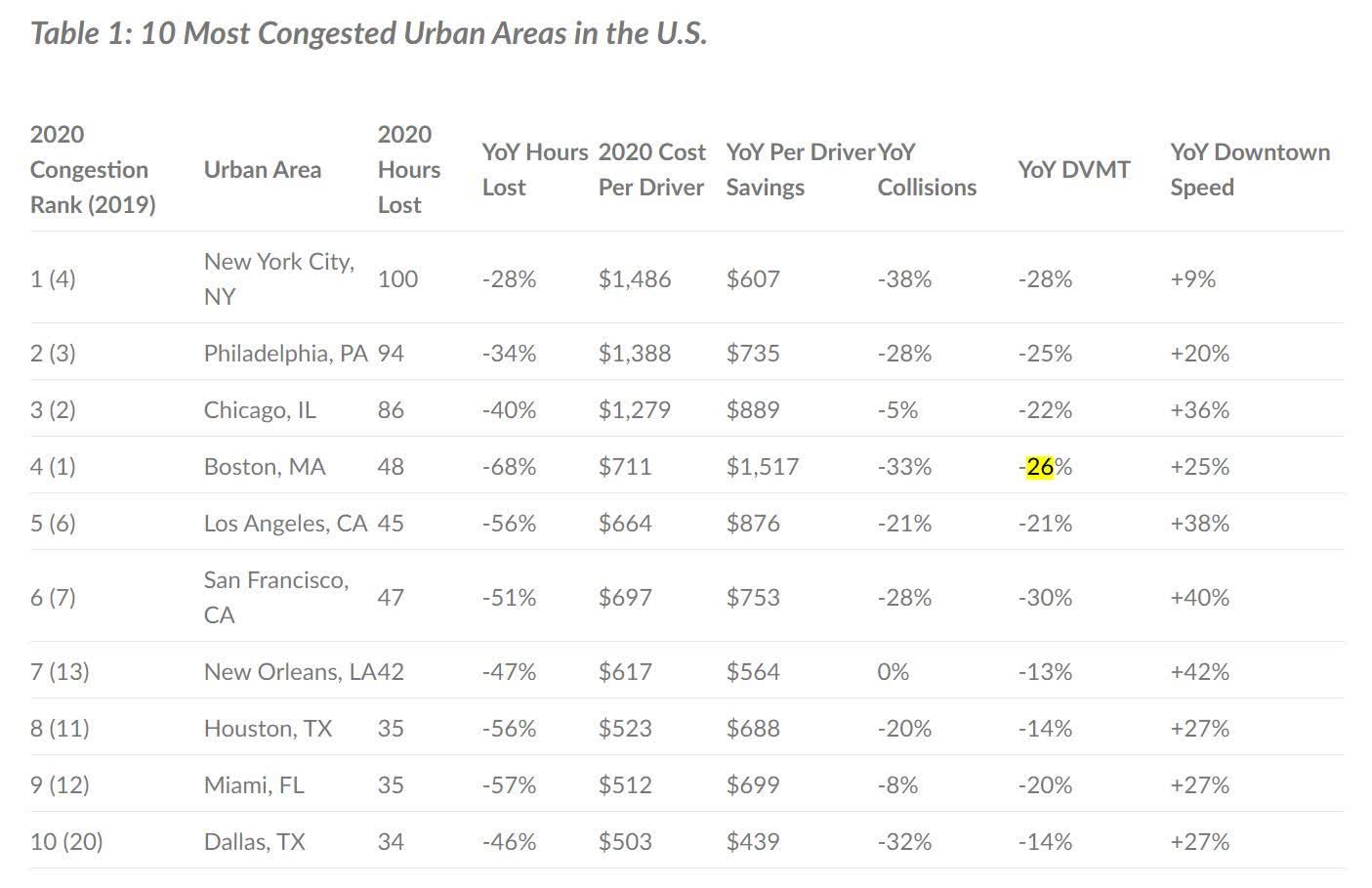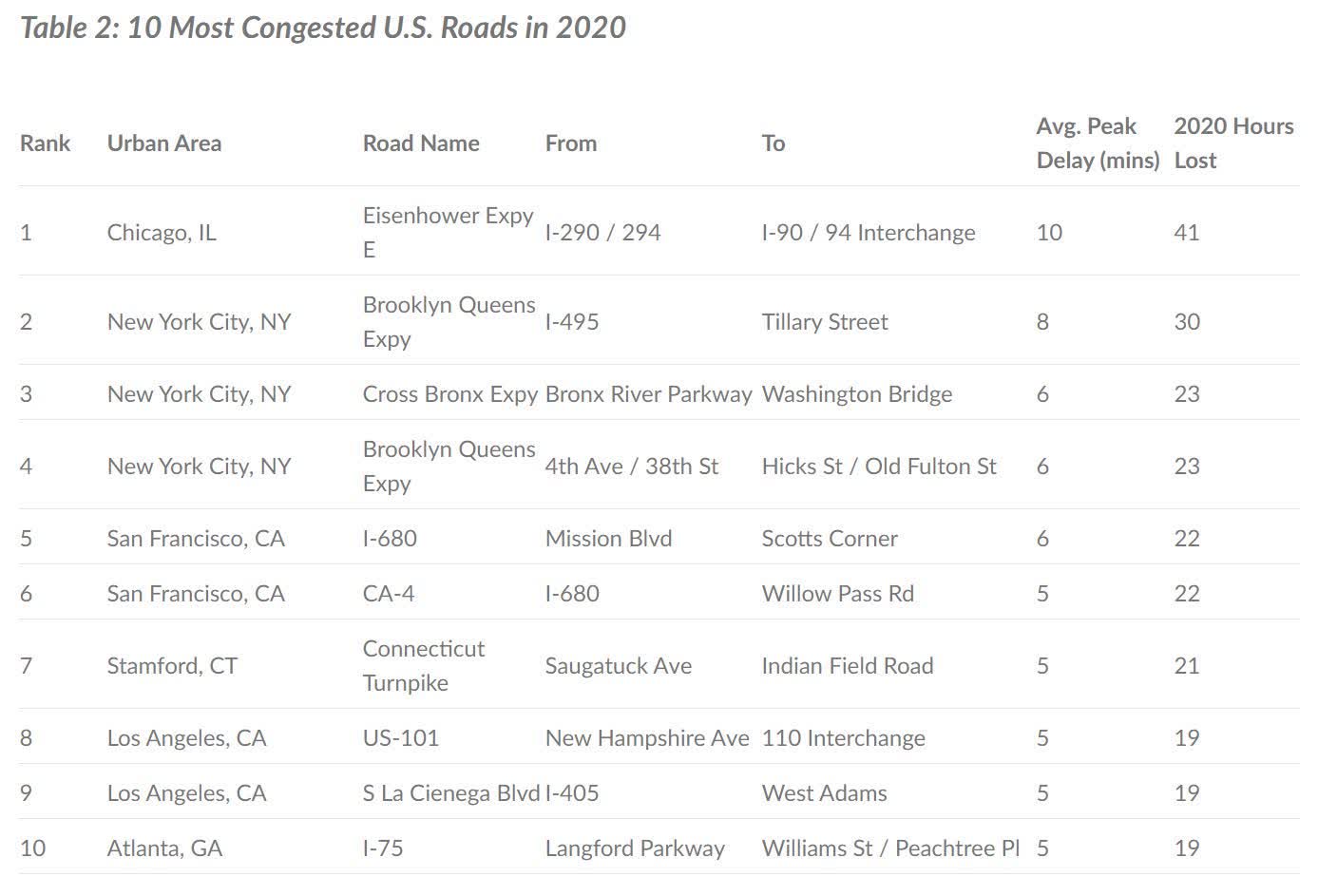In brief: The global pandemic has affected almost every aspect of our lives. One of the few positives to come from the situation is that drivers in major U.S. cities spent about half the usual amount of time in traffic last year, saving almost $1,000.
According to a new report from transportation analytics firm INRIX, congestion fell almost 50% across major U.S. cities last year due to stay-at-home orders, the huge jump in remote working, and businesses closing temporarily. Residents spent around 75 fewer hours in traffic across the entire year compared to 2019.
The average American driver lost only 26 hours of time to congestion on U.S. roadways in 2020, down from 99 hours in 2019. With less time spent in vehicles, they saved $980.
“In the transportation world, they used to say that obviously pricing is one way to reduce congestion and the other was a recession because we did see some travel times get reduced during the Great Recession,” said Bob Pishue, a transportation analyst at INRIX. “And apparently now we know that pandemics [reduce congestion] as well.”

In 2020, New York knocked Boston off the number one spot as the most congested urban area in the U.S. Despite the number of hours lost to traffic dropping 28% YoY, Big Apple drivers still spent 100 hours in traffic last year. It was followed by Philadelphia (94 hours), Chicago (86 hours), then Boston (48 hours).
Business closures and limits on gathering sizes also meant fewer trips to downtown areas were taken. Portland, Oregon, saw the largest drop-off in downtown trips, falling 66%, followed by San Francisco (-64%), Washington D.C. (-60%), Detroit (-59%) and Boston (-56%). On average, downtown traffic volume fell 44% during the pandemic.

“Although travel to downtowns has been the most affected by the spread of the virus and subsequent government restrictions, the reduction in congestion has resulted in quicker commutes for essential workers, more reliable deliveries and streamlined freight movement, all of which are vital to the economy,” said Pishue. “We expect downtown trips will continue to lag suburban and rural travel through 2021.”
New York wasn’t the most congested city globally in 2020; that dubious honor went to Bogota in Columbia, where drivers lost 133 hours to traffic despite a 31% yearly reduction.
Image credit: Ryan DeBerardinis
